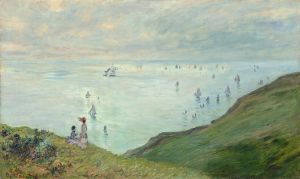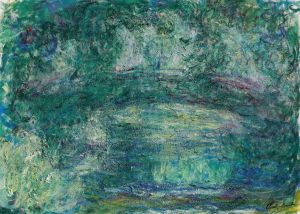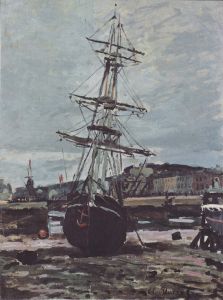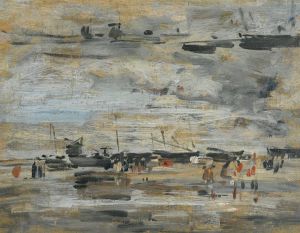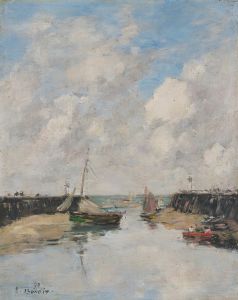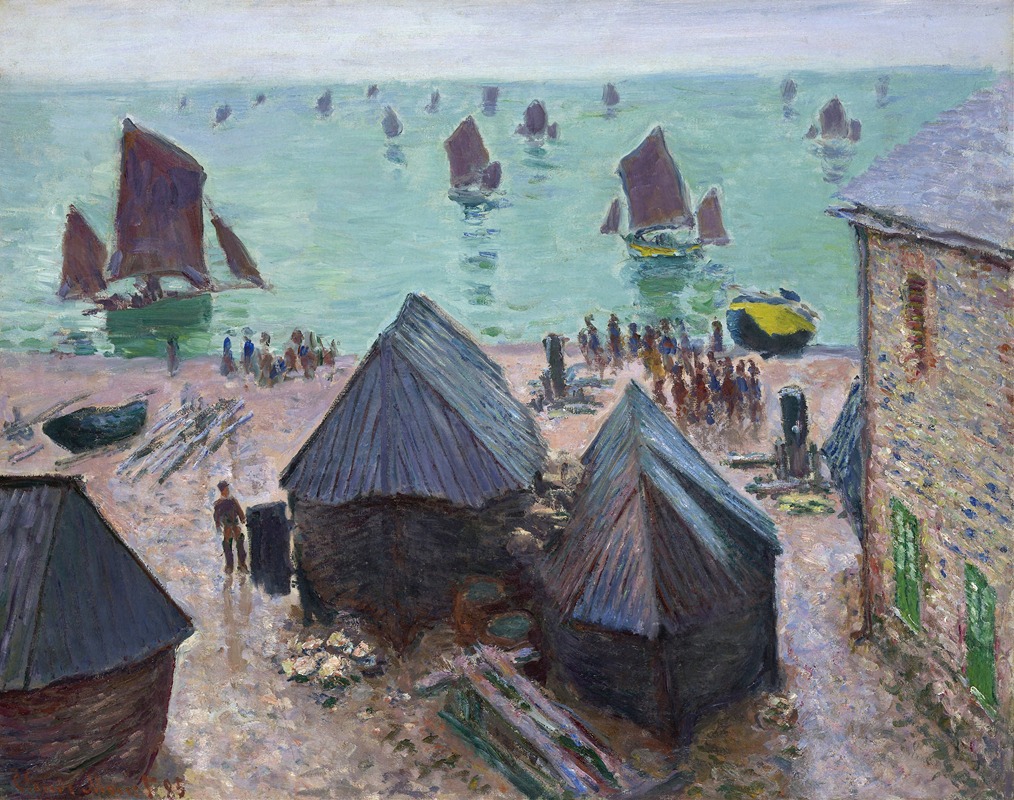
The Departure of the Boats, Étretat
A hand-painted replica of Claude Monet’s masterpiece The Departure of the Boats, Étretat, meticulously crafted by professional artists to capture the true essence of the original. Each piece is created with museum-quality canvas and rare mineral pigments, carefully painted by experienced artists with delicate brushstrokes and rich, layered colors to perfectly recreate the texture of the original artwork. Unlike machine-printed reproductions, this hand-painted version brings the painting to life, infused with the artist’s emotions and skill in every stroke. Whether for personal collection or home decoration, it instantly elevates the artistic atmosphere of any space.
Claude Monet's painting The Departure of the Boats, Étretat is a notable work by the French Impressionist artist, created in 1885. This painting is part of a series of works Monet produced during his stay in Étretat, a small coastal town in Normandy, France. Étretat was renowned for its dramatic cliffs and natural rock formations, which became a source of inspiration for many artists, including Monet.
In The Departure of the Boats, Étretat, Monet captures the dynamic interaction between the sea, sky, and human activity. The painting depicts fishing boats setting out to sea, with the iconic cliffs of Étretat visible in the background. Monet's use of light and color reflects the atmospheric conditions of the scene, emphasizing the movement of the water and the fleeting effects of sunlight. The composition highlights Monet's interest in capturing the transient beauty of nature and the everyday lives of people in coastal communities.
Monet's visit to Étretat in the mid-1880s marked a significant period in his career, as he sought to explore the interplay of natural landscapes and human presence. The town's unique geography, including the famous rock arch known as the "Porte d'Aval," provided Monet with a variety of subjects to study under different lighting and weather conditions. During this time, Monet produced several paintings of Étretat, each showcasing his mastery of Impressionist techniques and his ability to convey the essence of a moment.
The painting is characterized by its loose brushwork and vibrant palette, hallmarks of the Impressionist style. Monet's approach allows viewers to experience the scene as if they were present, observing the boats as they embark on their journey. The focus on natural elements and the depiction of ordinary life reflect the broader goals of the Impressionist movement, which sought to break away from traditional academic art and embrace modernity.
Today, The Departure of the Boats, Étretat is recognized as an important example of Monet's work during his time in Normandy. It is celebrated for its ability to evoke the atmosphere of the coastal environment and its contribution to the development of Impressionism. The painting is housed in a private collection, and its exact location may not be publicly accessible. However, it remains a significant piece in the study of Monet's artistic legacy and his exploration of light, color, and nature.






